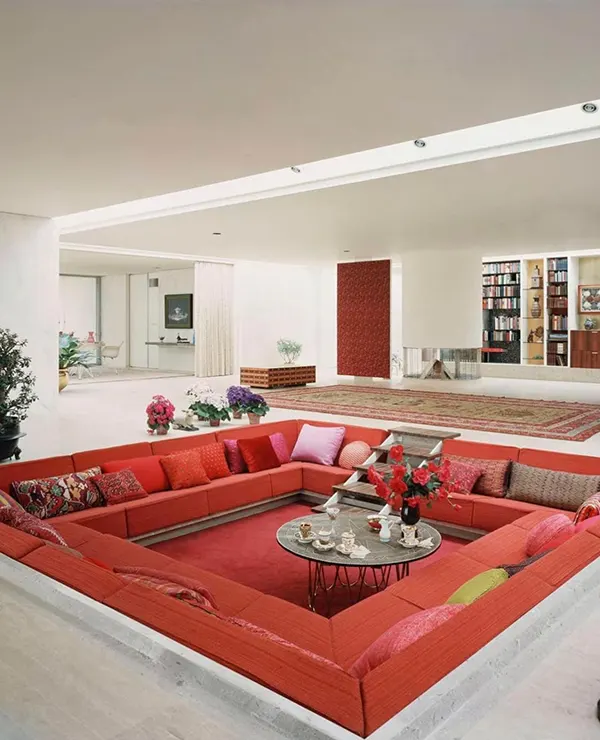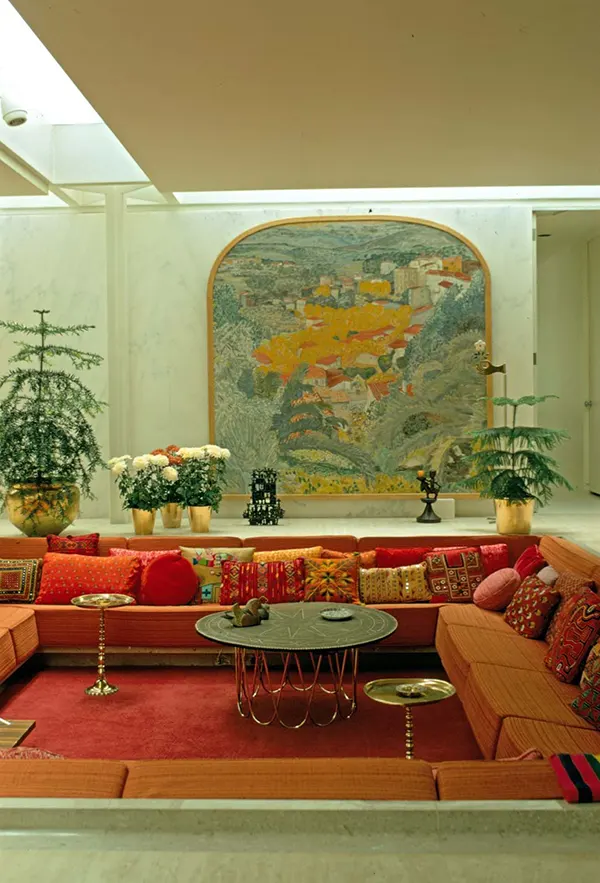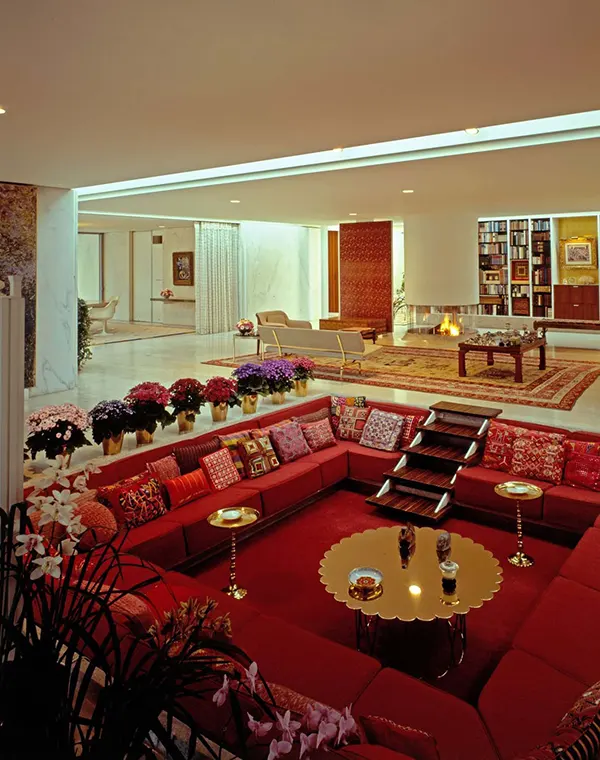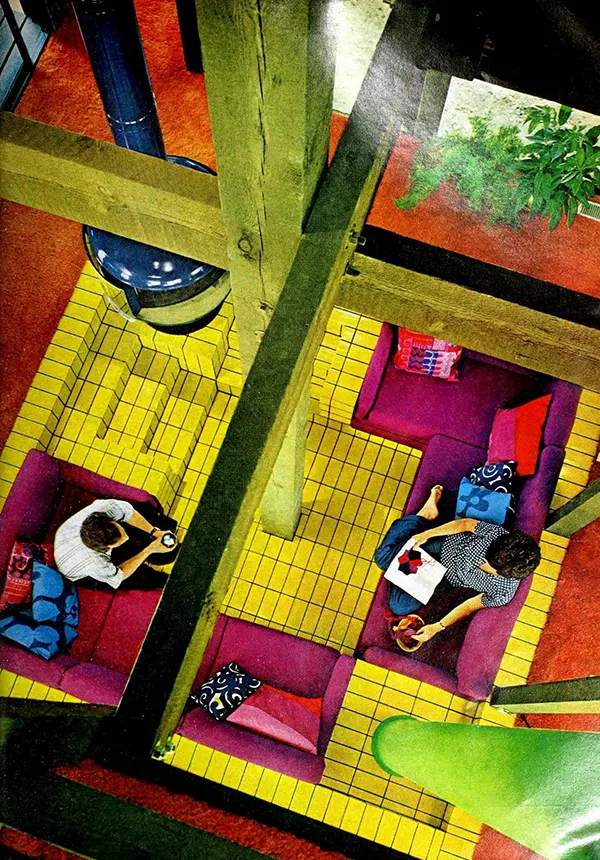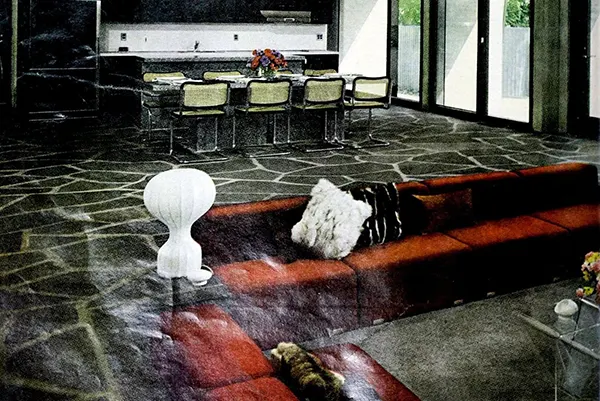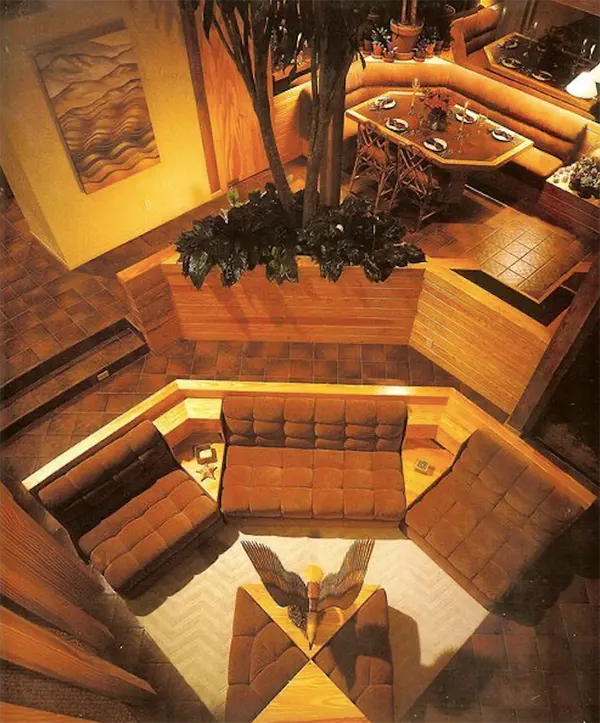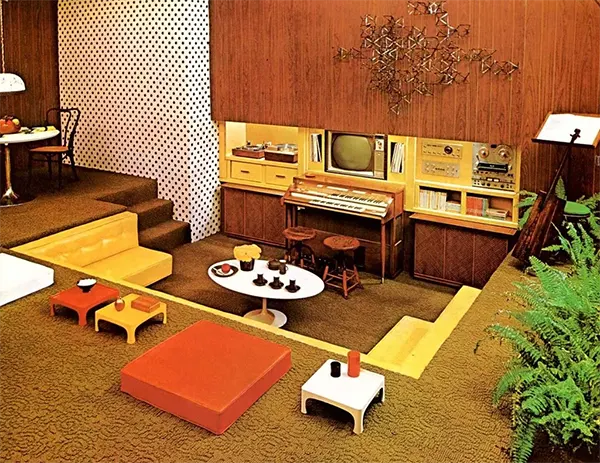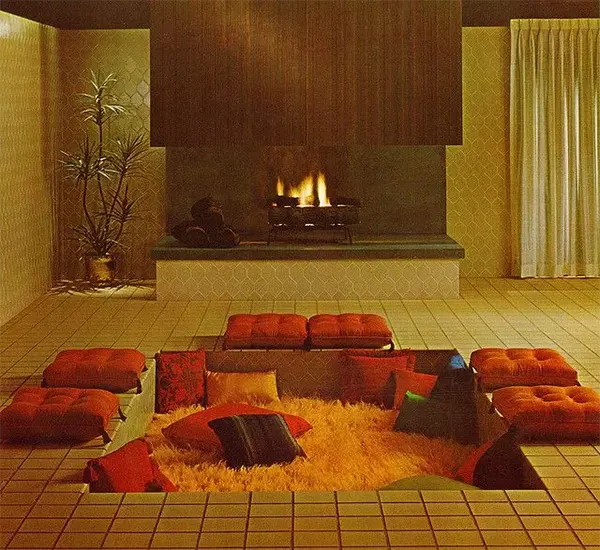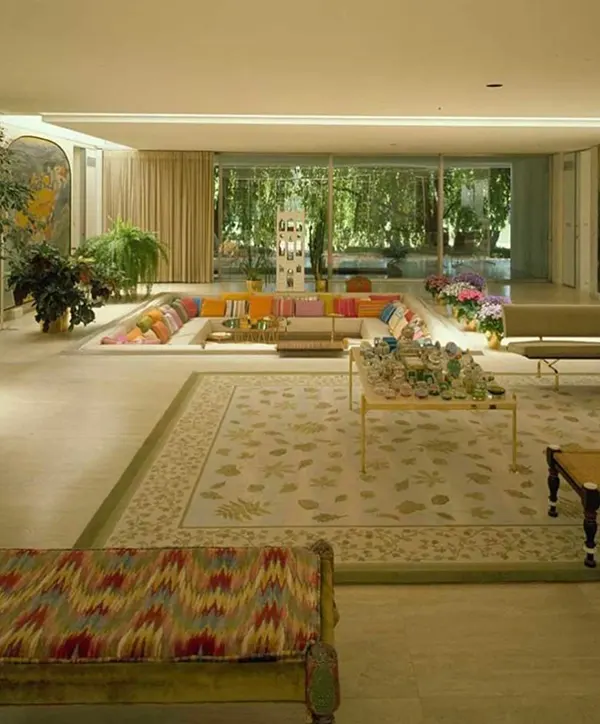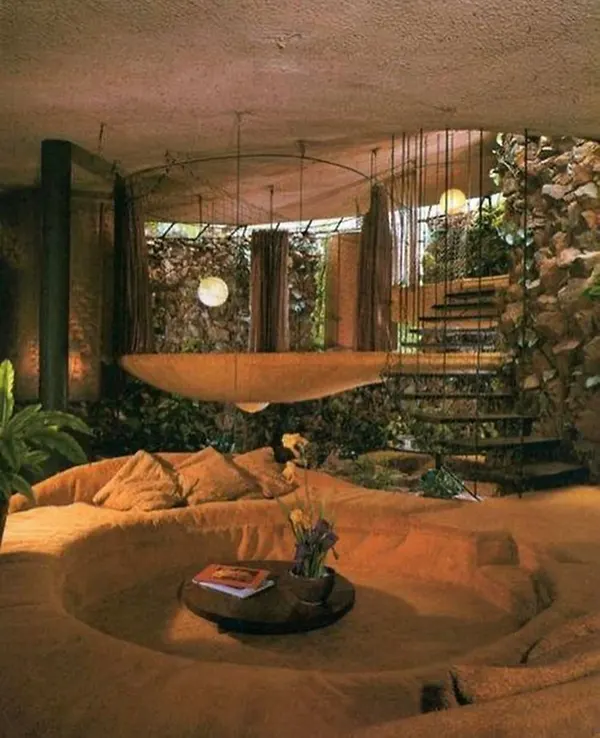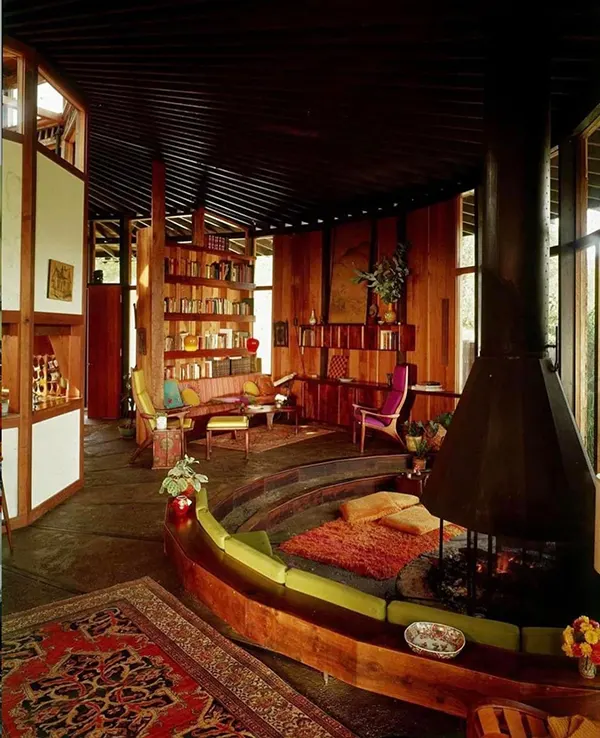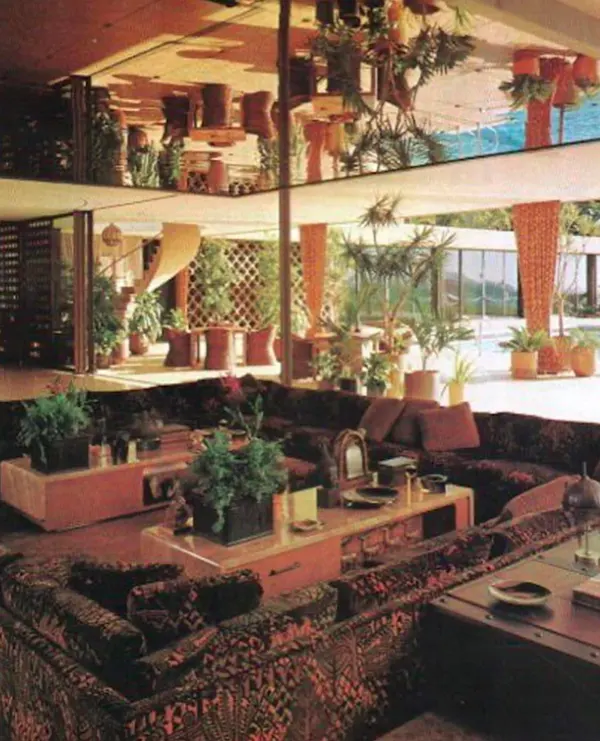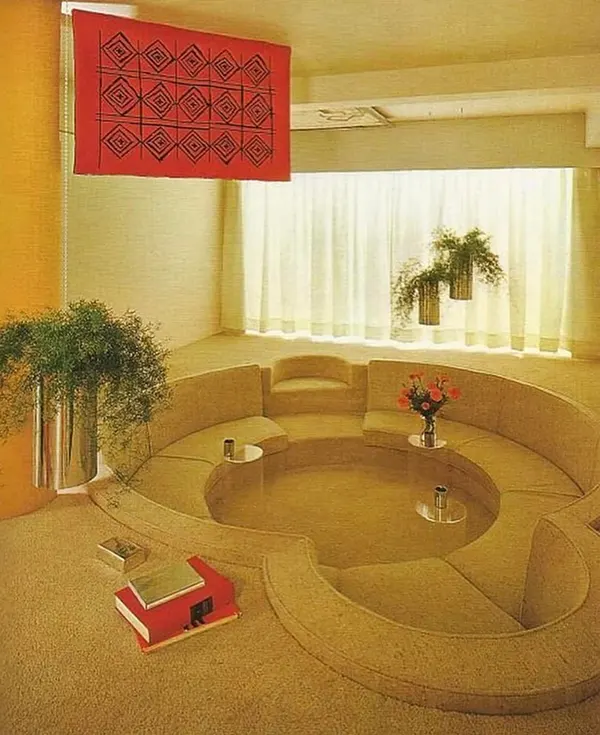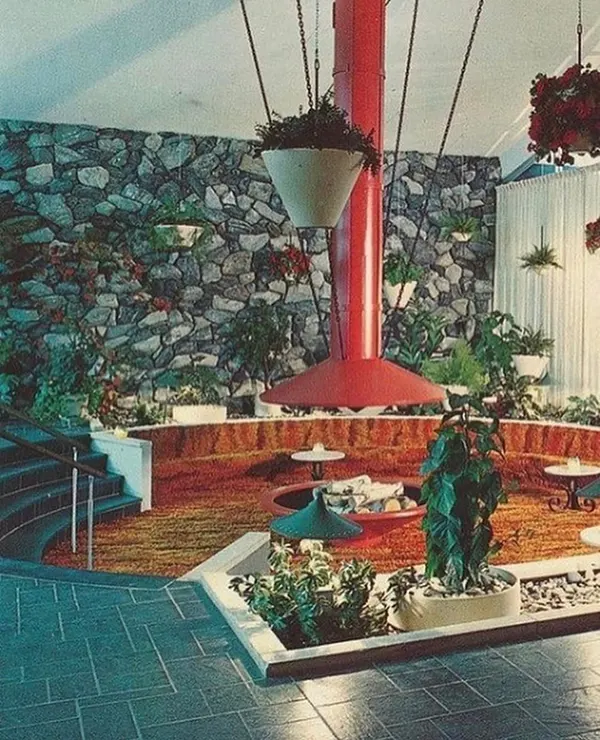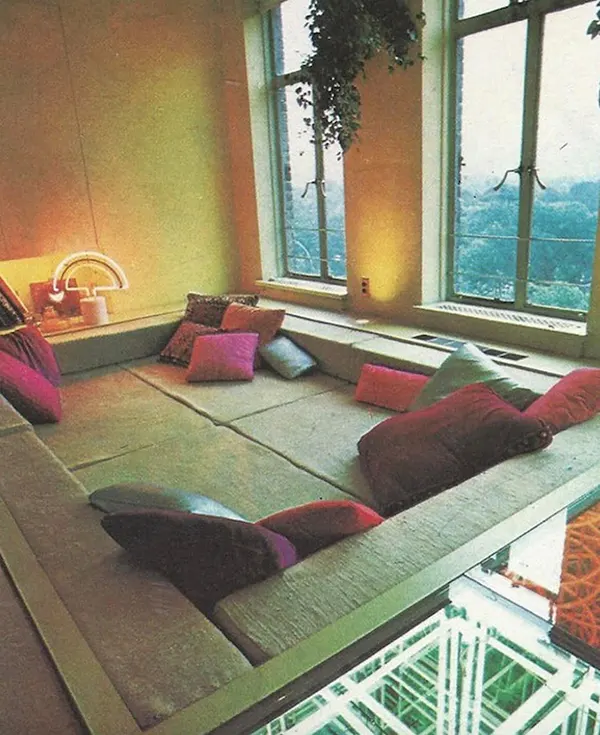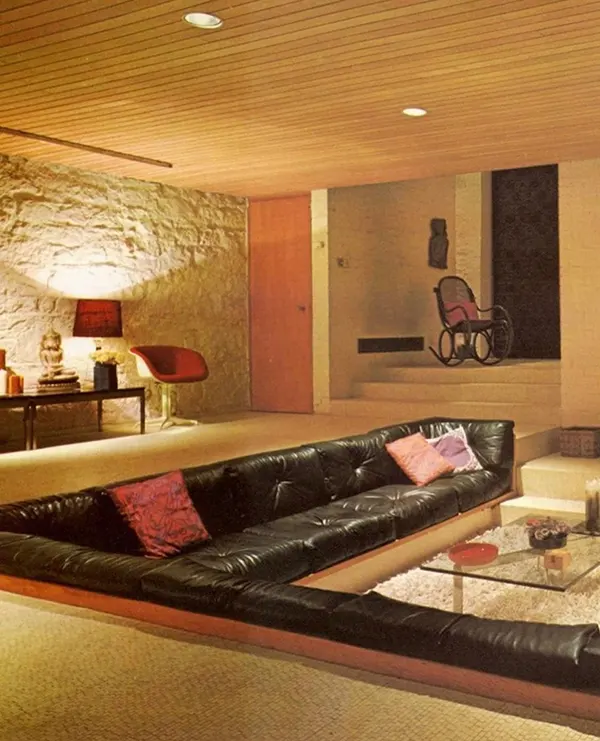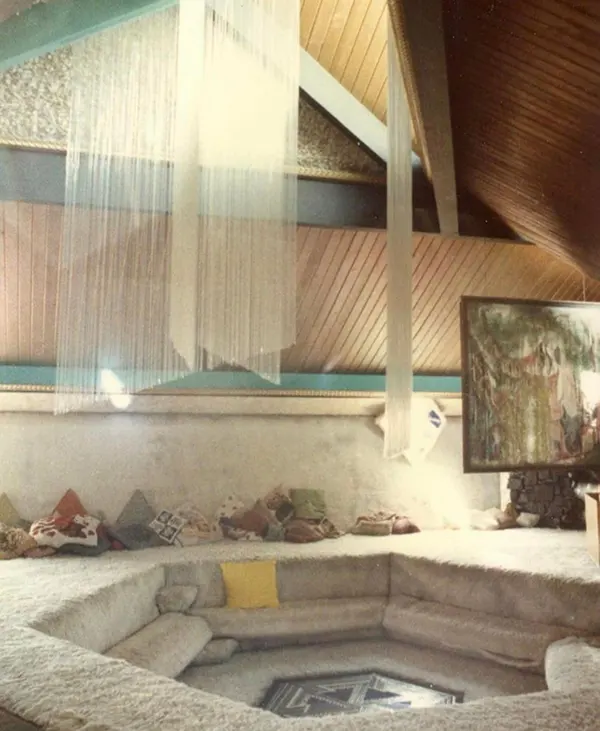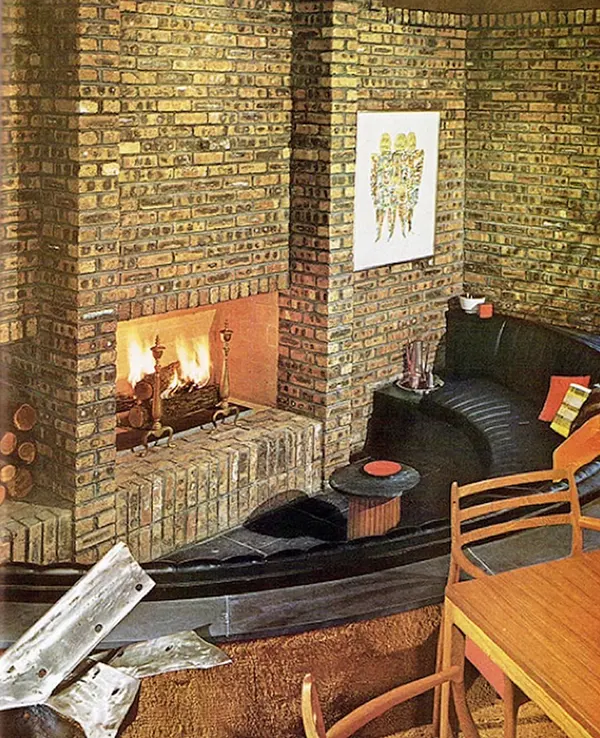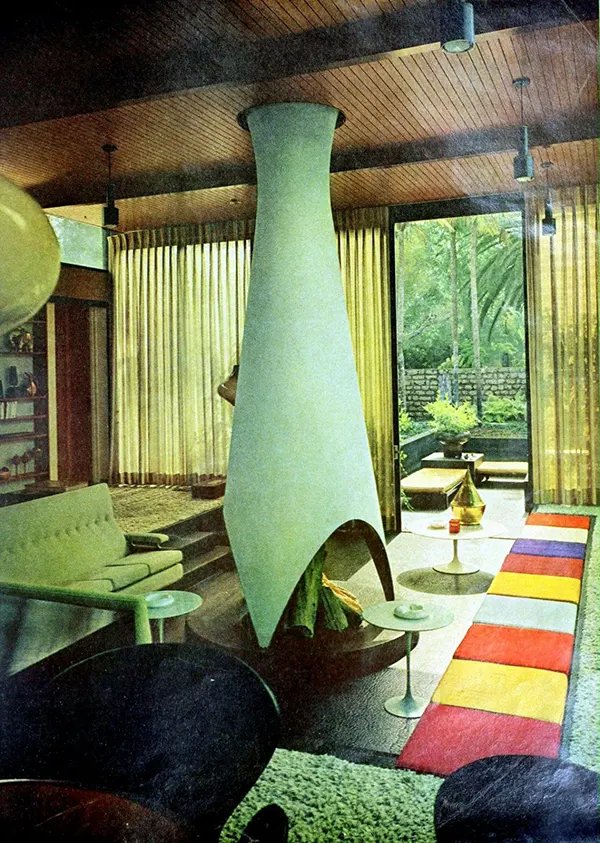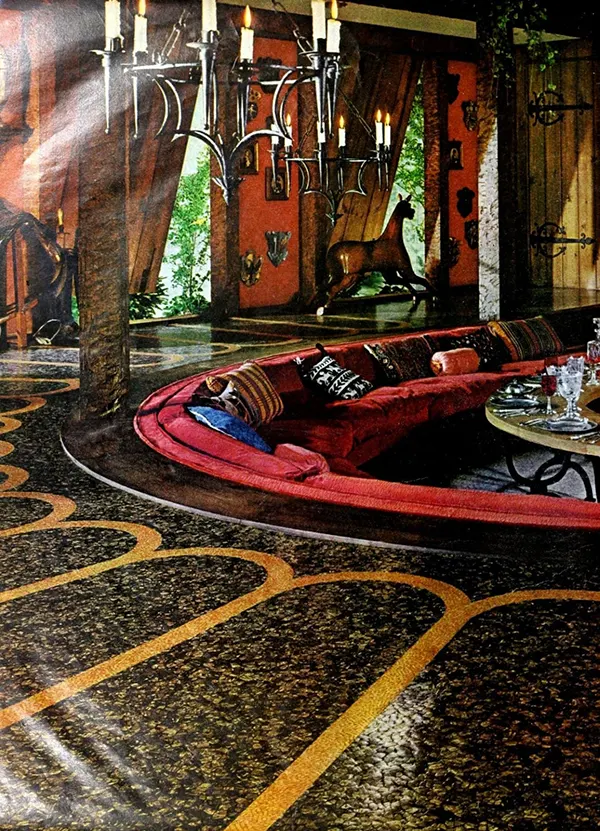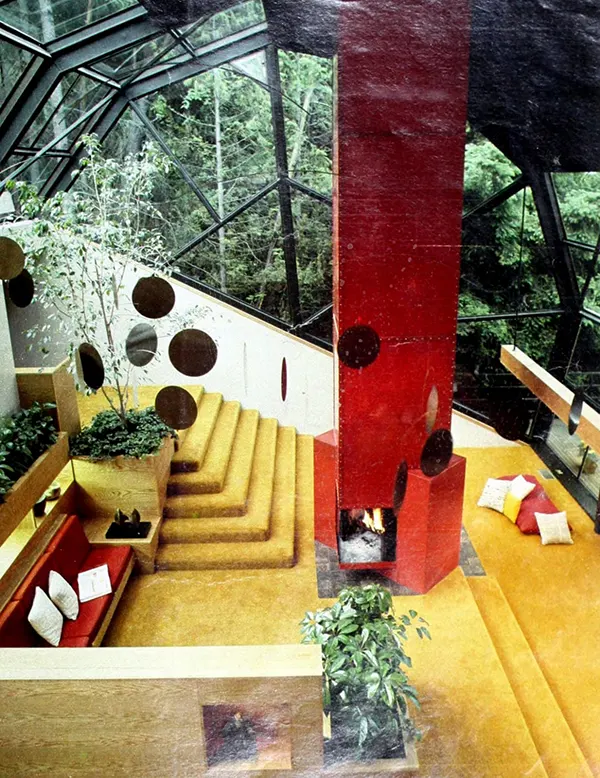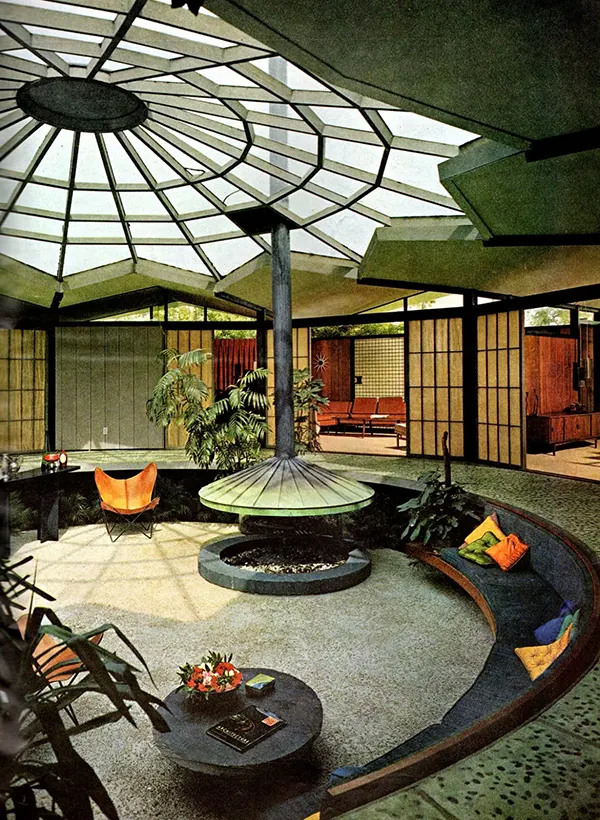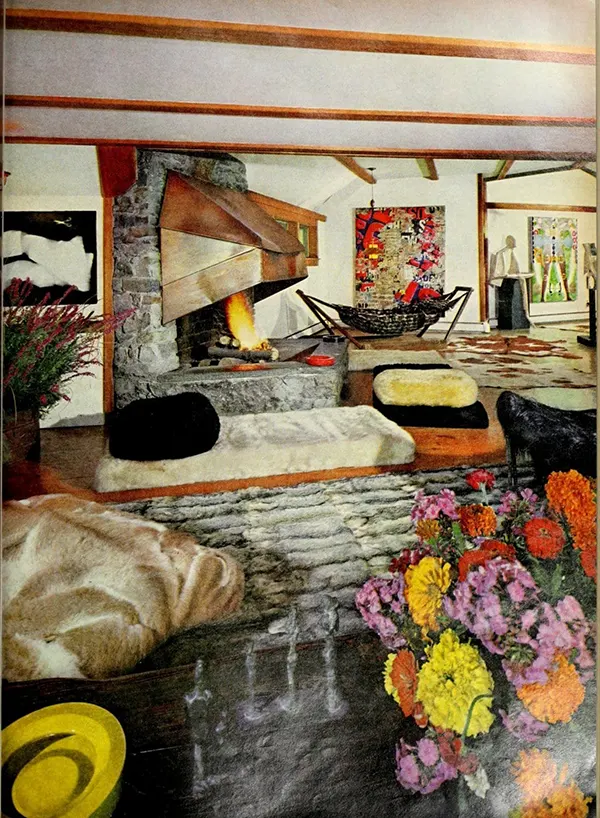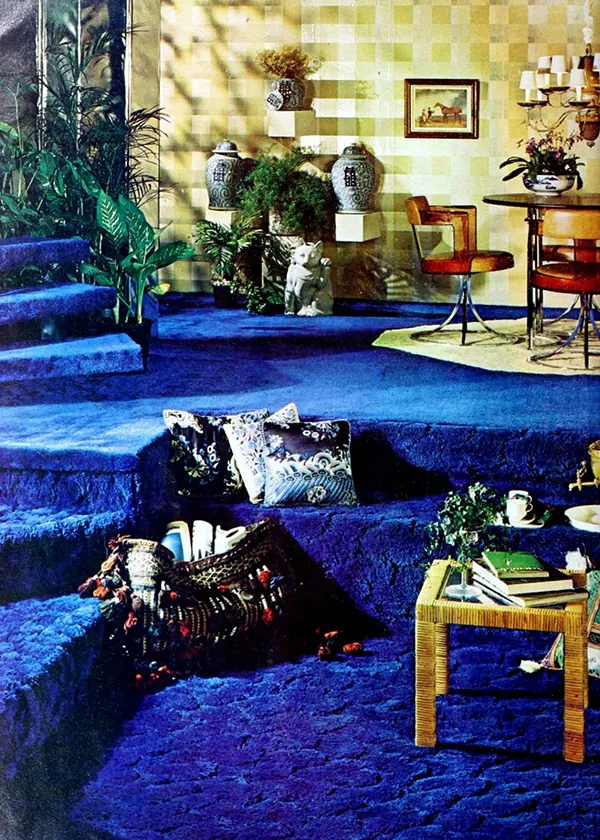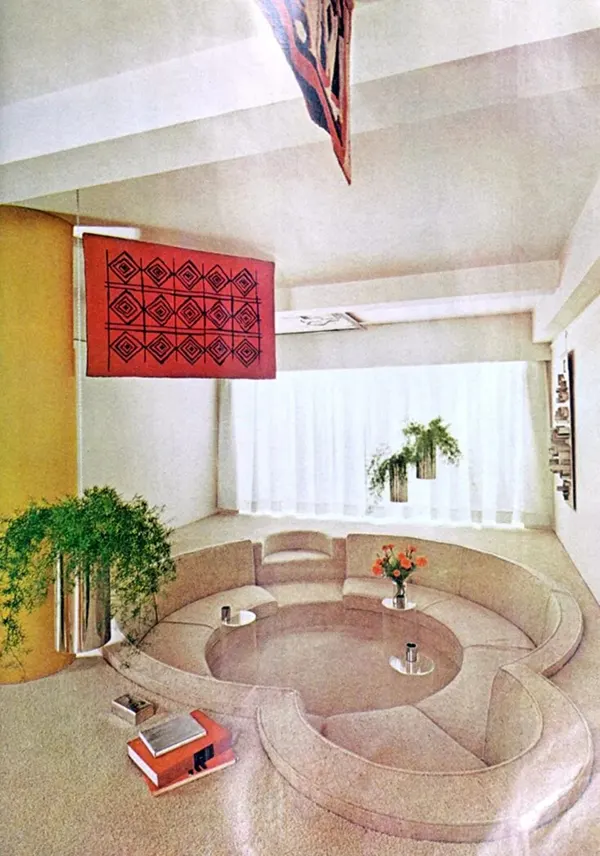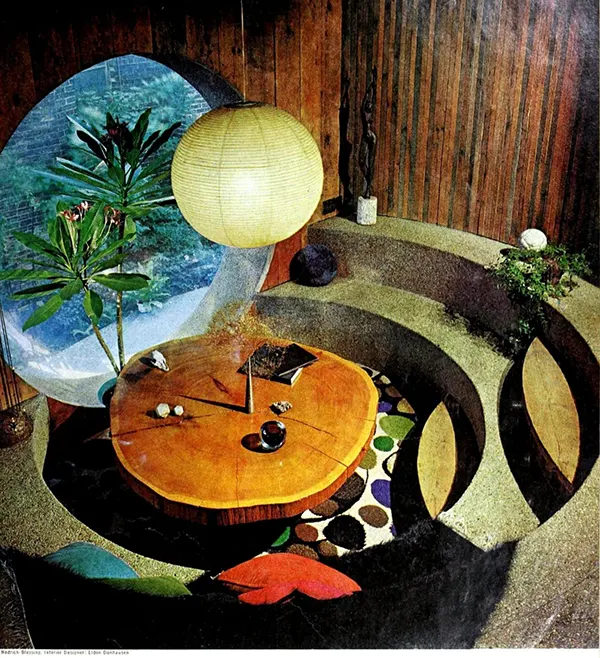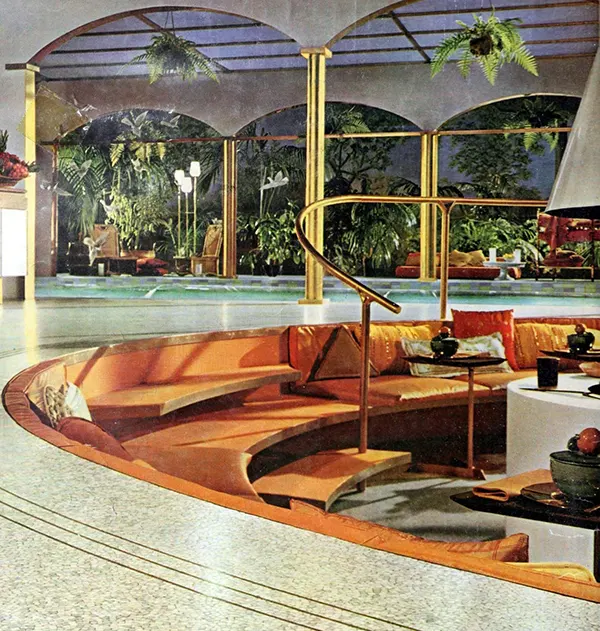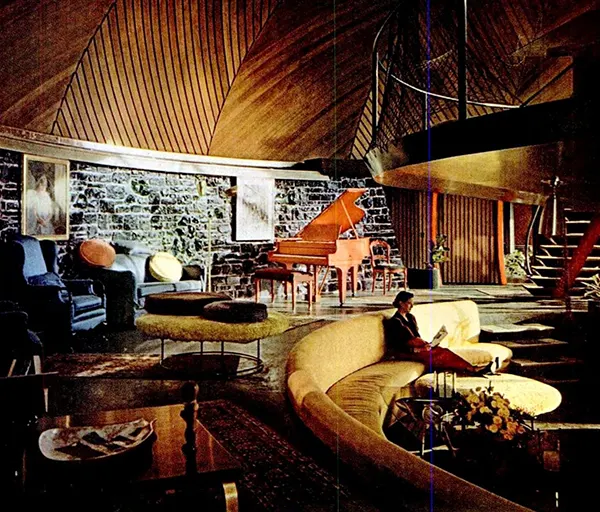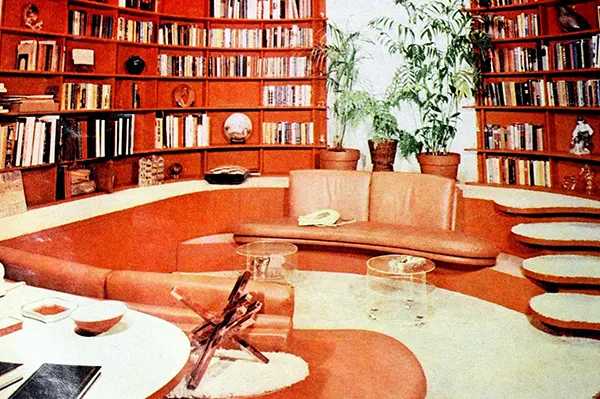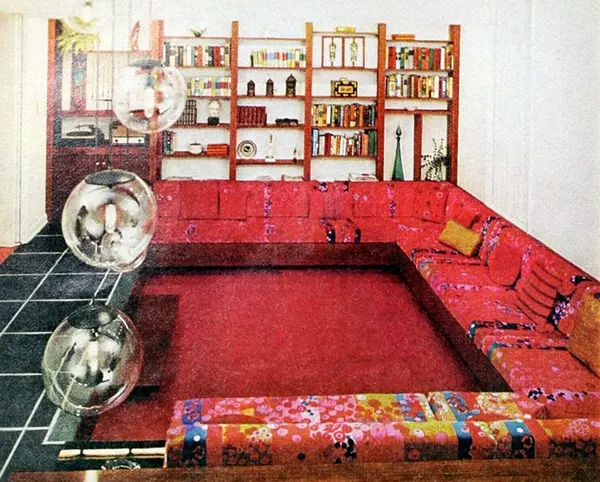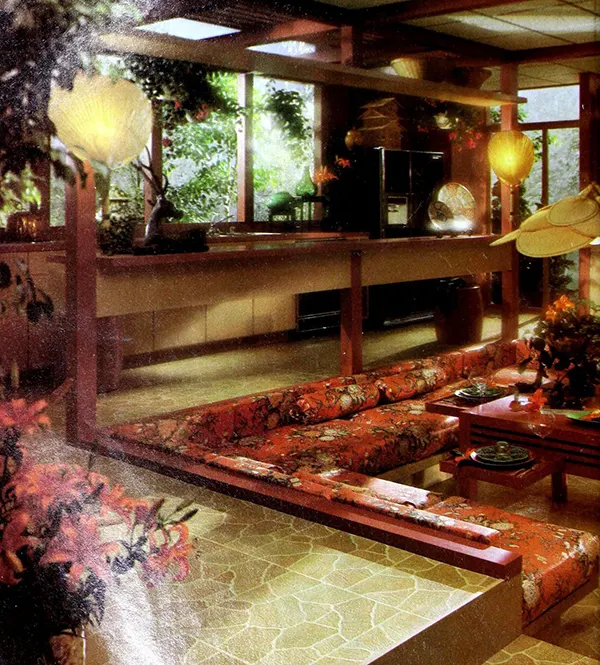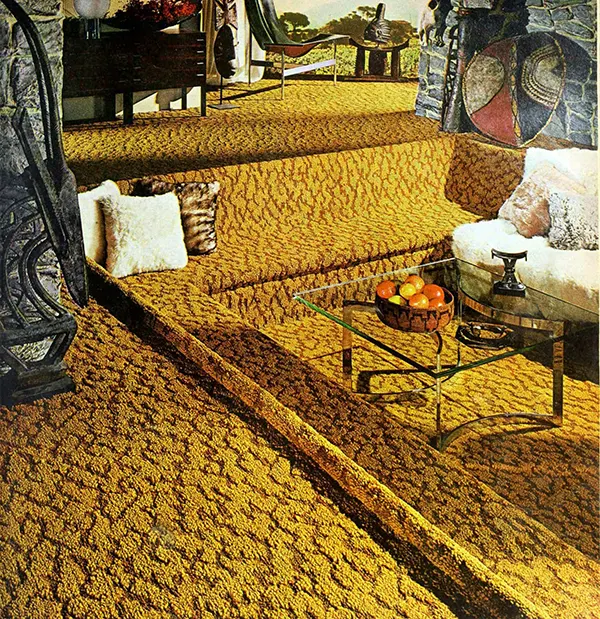Conversation pits were a unique and iconic architectural feature popular in the 1960s and 1970s. These pits were essentially sunken areas, often located in the living room, designed specifically for socializing and conversation. Characterized by their stepped-down structure and often filled with comfortable cushions and seating, conversation pits became a symbol of the mid-century modern design movement.
Emergence and Popularity
The concept of the conversation pit is often attributed to architect Bruce Goff but was popularized by Eero Saarinen and Alexander Girard with their design for the Miller House in 1958. The idea quickly caught on, and by the 1960s and 1970s, conversation pits had become a coveted feature in many homes, particularly those reflecting contemporary and modernist architecture.
Design and Features
Conversation pits were typically square or rectangular in shape, though circular and other shapes were also common. They were usually a few steps down from the main floor and were outfitted with plush seating that lined the perimeter of the pit. The center of the pit often had a coffee table or was left open for additional seating options. This design promoted a more intimate and relaxed setting for conversation, away from the distractions of television and other activities. They mirrored the era’s emphasis on casual entertaining and socializing. They provided a unique space for guests to gather and engage in conversation, reflecting the period’s shift towards more informal and relaxed living and entertaining styles. The conversation pit became a symbol of social interaction and modern living.
Variations and Adaptations
While most common in residential settings, conversation pits also found their way into public spaces like hotels, restaurants, and clubs, adding a touch of modernist flair and social appeal. Some designers added unique features to their conversation pits, such as built-in fireplaces or rotating platforms, to enhance the ambiance and functionality.
Decline and Resurgence
By the late 1970s and 1980s, the popularity of conversation pits began to wane. They were often criticized for being impractical, consuming valuable floor space, and posing a hazard, particularly for young children or elderly individuals. However, in recent years, there’s been a resurgence of interest in conversation pits, partly driven by nostalgia and the revival of mid-century modern design aesthetics.


